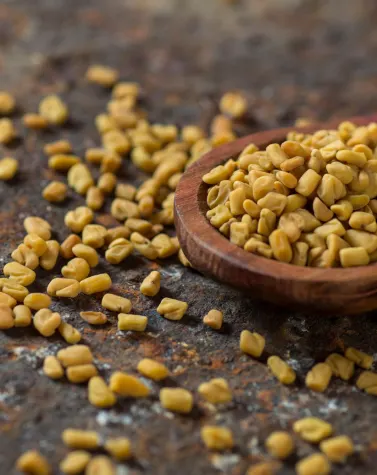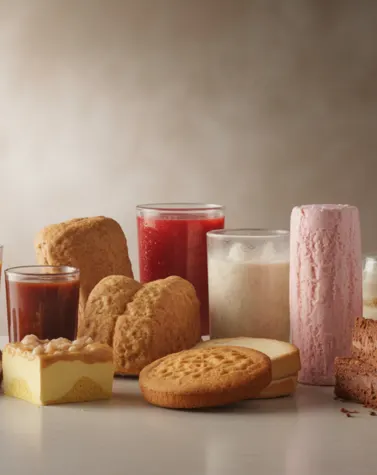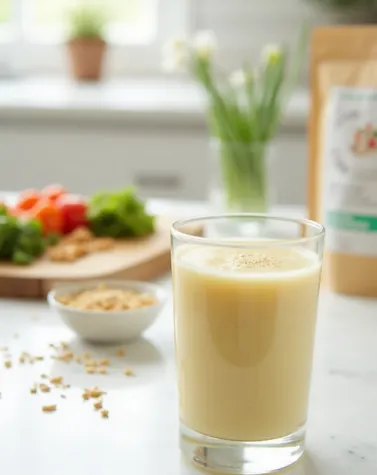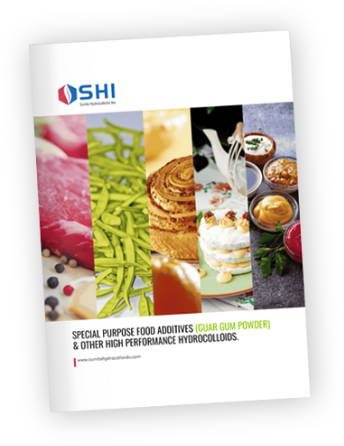
Understanding FDA Approved Food Thickeners: Uses and Safety Insights
Recall the last time you had a soup that felt watery or yogurt that lacked creaminess. Even with the right flavor, the texture probably left you dissatisfied because texture is not just a detail – it’s a dealbreaker when just not quite right.
From sauces that cling just right to desserts that feel rich and smooth, texture shapes how we experience food and behind that texture are food thickeners, the key ingredients that help control viscosity, improve mouthfeel and keep products stable from shelf to spoon.
But not all thickeners are alike. For food manufacturers and product developers, using FDA approved food thickeners is more than a box to check. It’s about safety, trust and meeting regulatory standards that protect consumers.
This blog breaks down what food thickeners do, how they’re approved and why choosing the right one matters, whether you’re formulating a new product or refining an existing one.
What Are Food Thickeners?
Food thickeners are ingredients or additives used to adjust and enhance the texture of a product without inducing any change in its flavor. These help in getting the food texture right and enhance platability by keeping ingredients from separating. They are used in your creamy soup, your fruit filling, your ready to drink shake and more, playing a key role in how a product looks, feels and performs.
Thickeners find applications in large scale food manufacturing units as well as household kitchens for everyday cooking. They help create consistency, extend shelf life and deliver a better meal experience.
Common Types of Food Thickeners
- Starches – Cornstarch, potato starch, tapioca and modified starches are widely used to thicken sauces, gravies and desserts.
- Gums – Xanthan gum, guar gum and gellan gum are thickeners, broadly used in dairy, beverages and gluten free products.
- Pectin – Found naturally in fruits, pectin is a thickener generally used in jams, jellies and fruit based fillings.
- Cellulose derivatives – Ingredients like methylcellulose and carboxymethyl cellulose are used to thicken and stabilize processed foods.
Each thickener has its performance profile. Some work best in the heat. Others are ideal for cold applications. The right choice depends on your product’s formulation, processing conditions and label goals.
How the FDA Approves Food Thickeners
Before a food thickener can be used in commercial products, it must meet strict safety standards set by the U.S. Food and Drug Administration. This process ensures that every approved ingredient is safe for its intended use and backed by science. There are two main regulatory paths:
A. GRAS (Generally Recognized As Safe)
Some thickeners qualify as GRAS, meaning they are widely accepted as safe by qualified experts based on long standing use or scientific evidence. GRAS substances do not require formal FDA approval but they must meet the same safety expectations. Common GRAS thickeners include xanthan gum, guar gum and pectin
GRAS status can be self affirmed or submitted to the FDA for review. The FDA may issue a “no questions” letter if the data supports safety, which indicates that the FDA has reviewed the notice and does not have any safety concerns about the substance.
B. Food Additive Petition
If a thickener does not qualify as GRAS, the manufacturer must submit a food additive petition. This includes detailed information on how the ingredient is made, proposed use levels and food categories, toxicology data and safety studies and dietary exposure estimates.
The FDA reviews this data to determine if the ingredient meets the safety standard of “reasonable certainty of no harm.” If approved, the agency publishes a regulation outlining how the additive can be used. This process protects consumers and gives manufacturers confidence in using FDA approved food thickeners across a wide range of applications.
Common FDA Approved Food Thickeners and Their Uses
Choosing the right thickener starts with knowing what each one does best. Below are four widely used FDA approved food thickeners that offer reliable performance across a range of food categories.
1. Xanthan Gum
Xanthan gum is used in sauces, dressings, gluten free baked goods and dairy alternatives. It delivers high viscosity at low concentrations and holds up in acidic, salty or frozen conditions. It adds body and prevents separation without needing heat to activate.
2. Gellan Gum
Gellan gum is used in plant based dairy, beverages, desserts and gummies. It works by forming clear, heat stable gels and suspends particles in low sugar or low pH systems. Gellan gum is ideal for clean label applications and products that need structure without cloudiness.
3. Guar Gum
Guar gum is extensively used in ice cream, sauces, bakery fillings and gluten free products. It hydrates quickly in cold water and builds viscosity fast. Guar gum is cost effective and works well in combination with other gums for added stability.
4. Modified Starch
Modified starch is used in gravies, pie fillings, soups and puddings. It works by offering consistent thickening under heat, shear and freeze thaw cycles. Modified starch is versatile and easy to process in both hot and cold systems.
FDA Safety Evaluation & Insights
Every FDA approved food thickener must meet the agency’s safety standard of “reasonable certainty of no harm” before it can be used in food products. The FDA uses a structured approach to assess food additive safety. This includes:
- Toxicology reviews – Ingredients are tested for acute, subchronic and chronic effects, including carcinogenicity and reproductive toxicity.
- Acceptable Daily Intake (ADI) – Scientists determine how much of a substance can be safely consumed every day over a lifetime.
- Estimated Daily Intake (EDI) – Real world exposure is calculated based on how much of the ingredient is used in food and how often it is consumed.
These evaluations are guided by the FDA’s Redbook, a comprehensive framework for food ingredient safety testing.
Addressing Common Concerns
Some consumers worry about allergies or overuse. While rare, sensitivities to certain thickeners like guar gum or carrageenan can occur. That is why usage levels are carefully regulated and all ingredients must be clearly labeled.
The FDA also monitors post market data including adverse event reports and new scientific findings. If new risks are identified, the agency can revise or revoke approvals.
Conclusion
Understanding how FDA approved food thickeners work is more than a technical detail – it is a key part of building safe, high quality products that meet regulatory standards and consumer expectations. From GRAS status to labeling rules, every step in the process is designed to protect public health and support transparency.
The scientific consensus is clear – when used as intended, FDA approved food thickeners are safe and effective. They are a trusted part of modern food formulation, backed by decades of research and regulatory oversight.
Related Blogs You Might Find Useful
Explore more insights on food thickeners and hydrocolloids with these expert articles from Sunita Hydrocolloids:
- Guar Gum vs Xanthan Gum
Compare the properties, applications, and performance of two popular food thickeners to choose the right one for your formulation. - Gellan Gum vs Guar Gum
Understand how gellan gum and guar gum differ in functionality and how each fits into clean-label and plant-based product development. - What Is Guar Gum?
A comprehensive guide to guar gum—its origin, applications, and why it’s a trusted thickener in food, pharma, and cosmetic industries.





